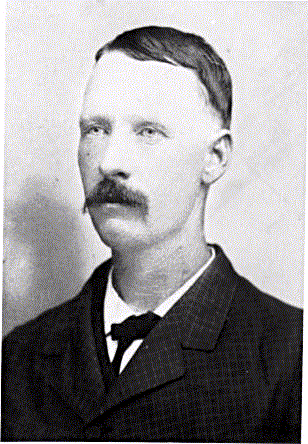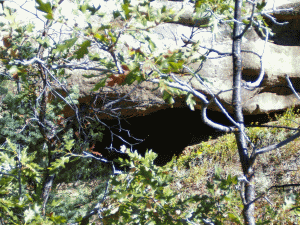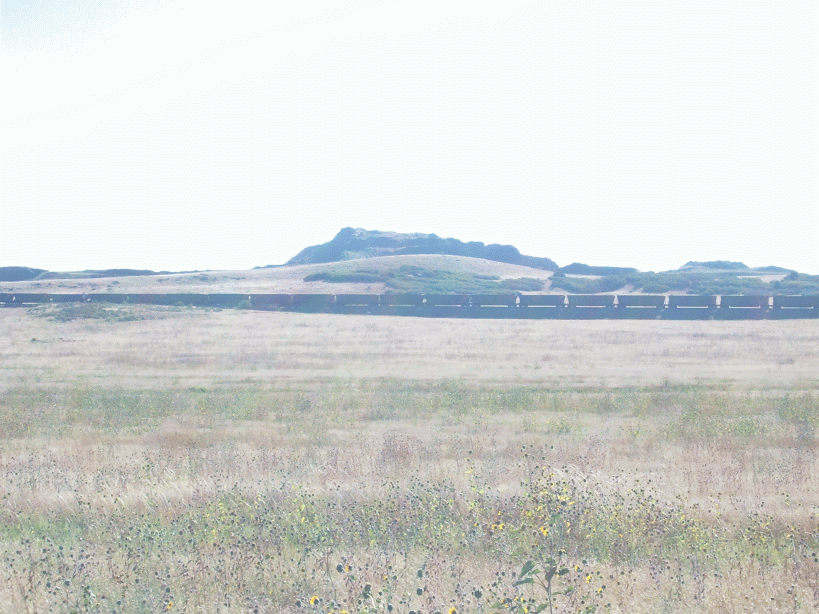History by Berry Spradley

"A Mighty Good Man to Die an Outlaw" Samuel W. Ketchum died in the New Mexico Territorial Prison at age 45, about 2 weeks after being shot and captured during a gun battle with a sheriff's posse which was chasing them after they robbed a Colorado and Southern passenger train between DesMoines and Folsom, New Mexico on July 11, 1899. Once before on September 3, 1897 at the same place, Twin Mountain, the southbound Denver-Fort Worth Express of the Colorado & Southern railroad had been robbed by Thomas 'Black Jack' Ketchum and his brother Sam, with their gang this time consisting of Dave Adkins, Will Carver alias G.W. Franks and probably Bruce "Red" Weaver, alias Charles Collings. Some historians say it was Kid Curry on the robbery instead of Weaver. The second holdup attempt of July 16,1899 was without 'Black Jack' in attendance because they had had a disagreement and split up. After the robbery, Sam and three others (Red Weaver, Will Carver and William Ellsworth "Elzy" Lay) headed for the mountains southwest of Raton, NM. The next day a posse consisting of Sheriff Ed Farr of Huerfano Co., Colorado, special Agent W.H. Reno of the Colorado & Southern RR, and five deputies found their trail and tracked them into Turkey Creek Canyon to a hideout cave (below) where Sam was wounded. Sam made his escape from Turkey Creek Canyon, but was found a few days later by William Reno, Special Railroad Agent, at the home of a rancher where he was arrested. He was taken to Santa Fe Territorial Prison where he died from his wounds. He was buried in the Odd Fellows Cemetery, now the Fairview Cemetery, on Cerritos Rd. in Santa Fe. The small picture above was likely taken just before, or just after, his death. The larger picture below is Twin Mountain where the gang held up the train three different times - the third time leading to the capture and hanging of Tom Ketchum. The picture was taken in September 2004 as a train was just passing. The train tracks come around the far side of the mountain on the left and proceed to the right. Just out of view on the right of the photographer's location the track makes a sharp U-turn and comes back immediately behind the place where the photographer was standing. These sharp turns made the train procede very slowly and is what made this the ideal place to rob the slow moving train. Ironically Sam was a member of the Minutemen branch of the Texas Rangers, from September 13, 1872 until November 15, 1872 to protect the San Saba citizens against outbreaks of indian raids. Thomas Green Chaney, San Angelo, Texas, interviewed, January 20, 1938 (written by the staff of the Folklore Project of the Federal Writers' Project for the U.S. Works Progress (later Work Projects Administration (WPA) from 1936-1940). The Library of Congress collection includes 2,900 documents representing the work of over 300 writers from 24 states. Below is part of the interview with Mr. Chaney. "I know the Ketchum boys in the San Saba county, and later in the Christoval section. Sam Ketchum was a mighty good man to die an outlaw. He was a very good friend of mine. He never would have been in to anything but got into trouble trying to save Tom." Thomas Green Chaney was born in Hunt County in 1864. His family drifted from one section to another farming a year here and there until they settled in Comanche County. Here he met Miss [Donyanna?] Poynor and later married her. She was the daughter of W.J. (Bill) Poynor, an old Indian fighter. In later years he moved to the Concho County and has lived here since. Author - Ruby Mosley - San Angelo, Texas -January 20, 1938
|
 Two deputies were wounded, and deputies W.H. Love and Tom Smith were killed. Sheriff Farr was also killed. The outlaws were using the latest weaponry - smokeless powder and steel jacketed bullets.
Two deputies were wounded, and deputies W.H. Love and Tom Smith were killed. Sheriff Farr was also killed. The outlaws were using the latest weaponry - smokeless powder and steel jacketed bullets.


